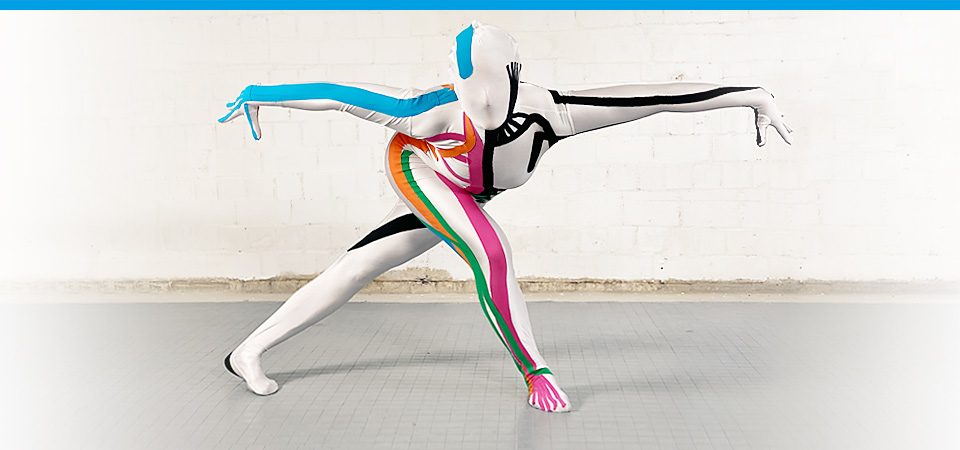
from eyebrow bulges across the skull tendon plate to the back of the head
hood muscle forms transition to arms: Traction transfer extends along the outside of the arm to the back of the hand and fingers
pulls down over back extensor over sacrum to ischiumover the back of the thighs laterally inside and outside to lower legs (below knee)
from the thigh (above the knee) over calves, Achilles tendons, heels, soles of the feet to under toes
(Description also applies to the other side)
from the front of your head down:
down by the feet:
back up to the head again:
(Description also applies to the other side)
The central pathway is much more complex than the more superficial pathways. In its course it stretches three-dimensionally around and through the abdominal and thoracic organs. Thus it forms the central “core” of the body. Roughly speaking, it can be divided into three areas that run three-dimensionally through the head and trunk, with a connection in the diaphragm and in the pelvis, where they join together to draw to the feet:
from the front of the head:
from middle of the head:
from the back of the head:
from torso to feet:
All areas always work together and are to be regarded as a unit! The subdivisions only serve for a better understanding of the path and complexity!